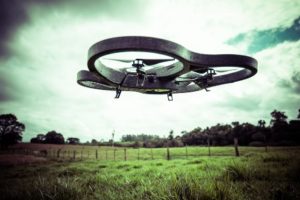The European Drone Strategy 2.0, adopted today by the Commission, sets out a vision for the further development of the European drone market. It builds on the EU’s safety framework for operating and setting the technical requirements of drones, which is the world’s most advanced. The new Strategy lays out how Europe can pursue large-scale commercial drone operations while offering new opportunities in the sector.
From jobs to new mobility solutions
 Thanks to the EU’s comprehensive regulatory framework, drones have flown safely for hundreds of thousands of hours in Europe’s skies, for example surveying infrastructure, monitoring oil spills, or sampling soil. Projects on using drones for medical air deliveries, transporting medical samples between healthcare services are also making good progress. The implementation of the ‘U-space’ in January 2023, a European system unique in the world to manage drone traffic safely, will lay the ground for increased operations.
Thanks to the EU’s comprehensive regulatory framework, drones have flown safely for hundreds of thousands of hours in Europe’s skies, for example surveying infrastructure, monitoring oil spills, or sampling soil. Projects on using drones for medical air deliveries, transporting medical samples between healthcare services are also making good progress. The implementation of the ‘U-space’ in January 2023, a European system unique in the world to manage drone traffic safely, will lay the ground for increased operations.
Before pushing ahead with these innovative technologies, the Commission wants to ensure that society supports drones. To address concerns over noise, safety and privacy, the Strategy therefore calls for national, regional and local municipalities to ensure that drone services are aligned with citizens’ needs.
The Strategy envisions the following drone services becoming part of European life by 2030:
- Emergency services, mapping, imaging, inspection and surveillance within the applicable legal frameworks by civil drones, as well as the urgent delivery of small consignments, such as biological samples or medicines.
- Innovative Air Mobility services, such as air taxis, providing regular transport services for passengers, initially with a pilot on board, but with the ultimate aim of fully automating operations.
Unleashing the potential of the EU drone market and services requires the identification of critical technology building blocks, such as artificial intelligence, robotics, semi-conductors and EU space services and mobile telecommunications. This will help the EU build an innovative and competitive drone sector, reducing strategic dependencies.
The Strategy also identifies areas for synergies between civil and defence drones, and for increased counter-drone capabilities and system resilience.
19 actions for tomorrow’s drone market
The Commission will now launch work on the Strategy’s 19 operational, technical and financial flagship actions to build the right regulatory and commercial environment for tomorrow’s drone air space and market:
- Adopting common rules for airworthiness, and new training requirements for remote and eVTOL (manned electric Vertical Take Off and Landing) aircraft pilots.
- Funding the creation of an online platform to support local stakeholders and industry implementing sustainable Innovative Air Mobility.
- Developing a Strategic Drone Technology Roadmap to identify priority areas for research and innovation, to reduce existing strategic dependencies and avoid new ones arising.
- Defining criteria for a voluntary cybersecurity-approved drone label.
This work will prepare the way for large-scale commercial operations and ensure that Europe benefits from synergies between the civil, security and military use of drones and related technologies, including counter-drone solutions.
Background
The Commission’s Sustainable and Smart Mobility Strategy announced the preparation of an updated European Drone Strategy by the end of 2022. A Staff Working Document assessing the challenges faced by the drone industry, as well as the analysis and data underpinning the new Drone Strategy 2.0, accompanies this Communication.
The Commission has been building the foundations of a comprehensive EU policy on drones since 2014. Commission Implementing Regulation 2019/947 and Commission Delegated Regulation 2019/945 contain detailed rules and procedures for the operation of unmanned aircraft, and set the requirements for the design and manufacture of unmanned aircraft systems. Since 2003, the EU has invested almost €980 million in the development or use of drones for innovative applications. It has funded 320 projects relating drones under its research and innovation programmes.
For More Information